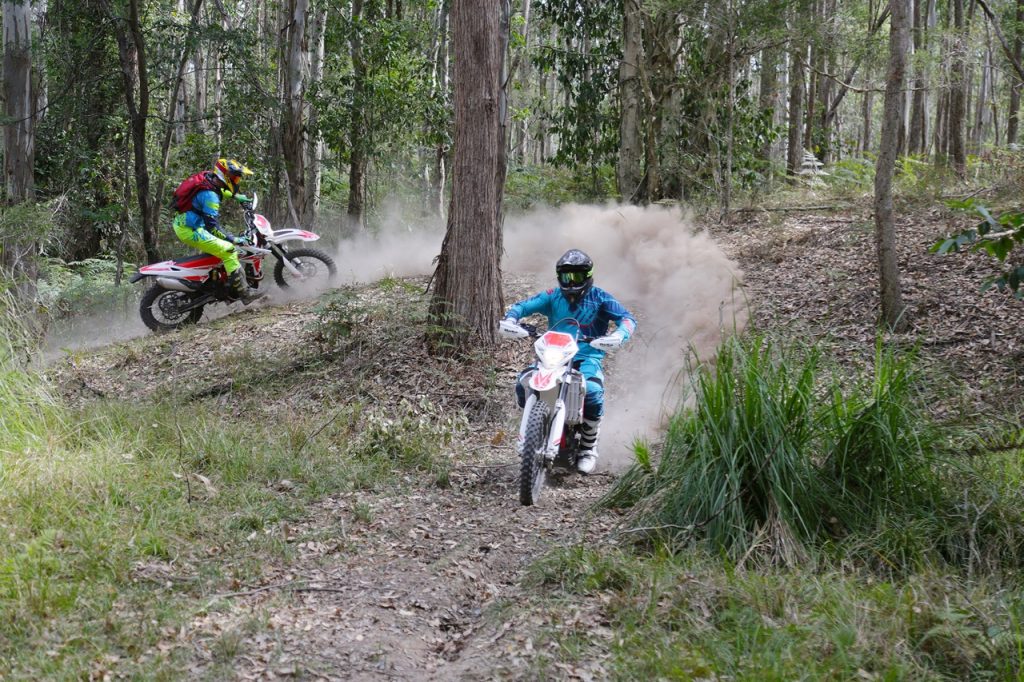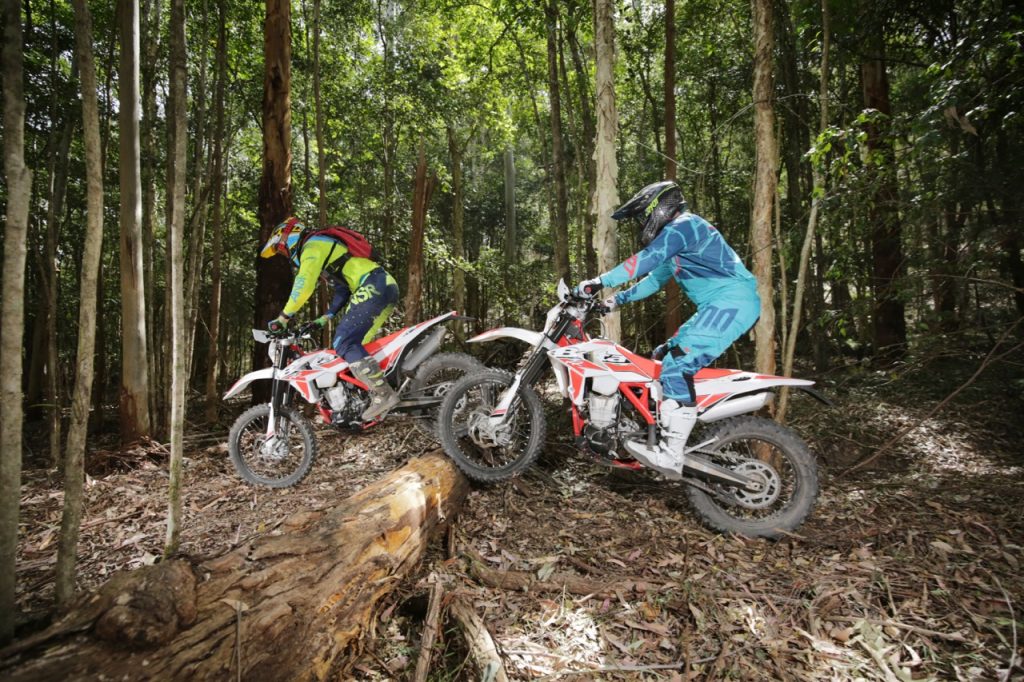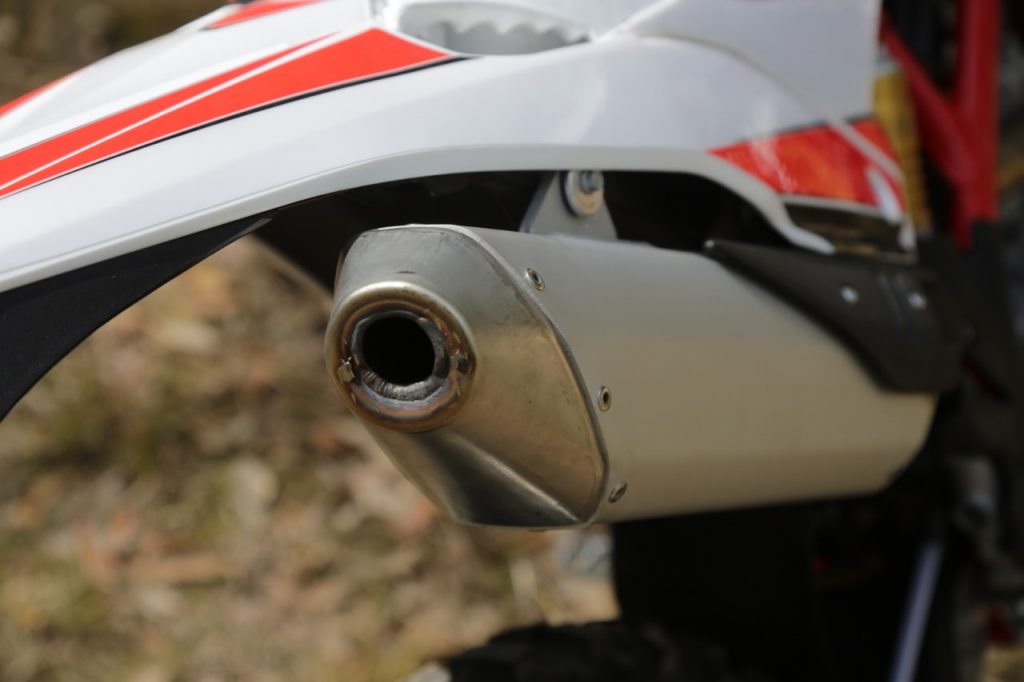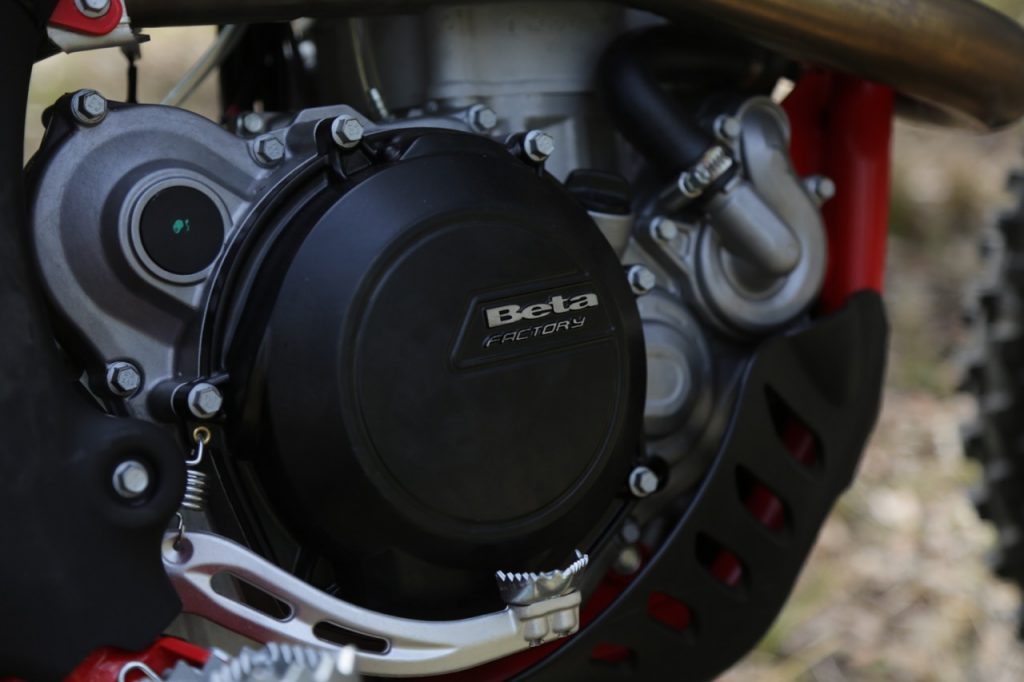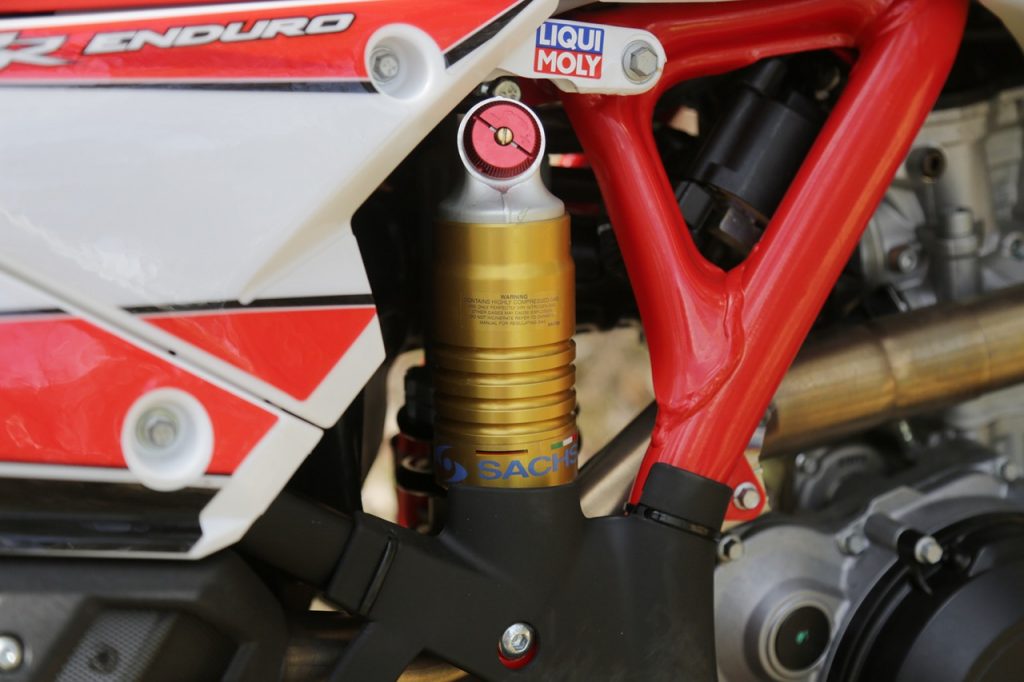We teed up a fresh piece of singletrack to play switcheroo on Beta’s latest offerings, the RR430 and RR480 to see if size does really matter.
This feature was first published in ADB issue #461 – February 2018.
In more familiar terms, it’s a 450 versus 500 four-stroke shootout. We’ve had this discussion before, but not from the perspective of a red-blooded male. We wanted to establish if more cc’s makes you faster and if not, what is it good for?
On our three-minute loop, it was clear the 480 wasn’t quicker. The loop was tight, and the reason it was slower around our loop was because the inertia just drove it harder and longer and that meant brake control had to be more precise.
For 2018 the four-stroke Beta engines lost 1.7kg, received a new clutch, gear selector mechanism, airbox and secondary fuel injector, but all that couldn’t get the 480 over the line faster than the 430.
For 2018 the 480RR is aggressive. The introduction of the second injector ensures there’s always a handful of power whenever you need it which, on a 480, is not very often.
As we all know, the 480 is at home in fast, open stuff. Events like Hattah, Finke and the Condo 750 are built for big four-strokes. I’d be interested to test its high-speed stability, as it carries roughly the same wheelbase (1490mm) as the KTM 500 EXC-F (a proven desert winner) but with a less raked-out feel.
The 480RR would suit the V8-driving, front-row rugby forward, with plenty of room to twist the throttle, some sand in their front yard or the Victorian High Country out back.
HOW YOU USE IT
The 450cc capacity (or 430 in this case) is not the ultimate singletrack warrior, that title is reserved for 350Fs. But, when comparing it to a 480, it is.
We want to know how a 430 compares with the 480. Is it down on power? Marginally, but that’s not the biggest difference. The inertia and the way a 480 builds its power is the challenging factor here. On the other hand, the 430 can be revved a little harder without that bellowing bark and aggressive tendency of the 480RR once it hits mid-revs. To achieve this, Beta reduced the bore by 5mm to 95mm compared with the 480RR, but increased compression to 12.33:1. This gives the 430RR a tighter, higher revving feel.
The RR430 is the ultimate Vic High Country companion. It has big-bore four-stroke power when you need it, and let’s face it, not many people need more than 430cc, but is better in the tight stuff. It still responds better when chugged a gear tall, you just have to be a little more mindful of where your revs are when ascending hills.
If you took the capacity stickers off both, most riders would only notice the power when they took off or when they needed to stop for a tree. When just cruising with half throttle, the difference isn’t as obvious.
INCH FOR INCH
While the 430RR and 480RR are different in the engine department, they behave largely the same in the chassis and suspension. They run the same 48mm Sachs fork and monoshock and the performance is essentially the same. The Sachs gear is excellent and, for a trailrider, would require minimal changes to get it set-up for you.
The Beta enduro range have come a long way in the last few years. They are no longer just a trailbike for someone looking for a colour other than orange. The addition of the second injector and the weight cuts have made the Betas more aggressive.
The 480RR is noticeably more aggressive than the RR430, especially in tight trees, and would be better suited to someone who likes fast open spaces, long four-wheel-drive hillclimbs and deep sand. The RR430 is for the rider who wants to do half-and-half, which is take on the never ending hill climbs and then use the mountain bike track to get back down.
